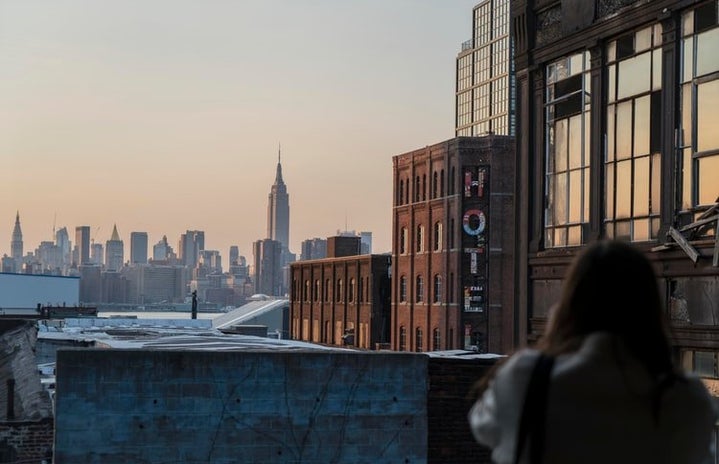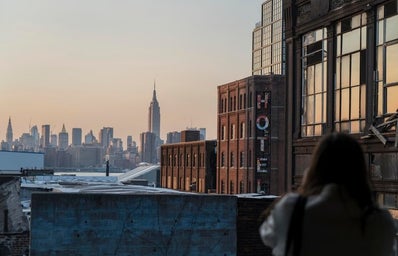Conceived as a socialist utopian co-op in 1885, it is no surprise that the Chelsea Hotel would later gain its popularity for being the bohemian haven for New York City’s art scene. The list of legendary musicians, artists and writers who chose Chelsea as their residence includes Bob Dylan, Janis Joplin, Andy Warhol, Patti Smith, Leonard Cohen, Arthur Miller, Allen Ginsburg and many more. Stanley Bard, former owner of the hotel, and his father, David Bard, have at many points been credited for the establishment of Chelsea as an artistic mecca — a legacy that the hotel possessively holds onto even as the days of trading art for rent are long gone. With the words of its tenants, writers and artists who have made the hotel not only their residency but their creation, I set down a brief history of the Chelsea, hoping to unravel the mystery of how this hotel managed to attract so many greats.
Power of the space
Zoe Pappas (head of Chelsea Hotel Tenant’s Association): Coming from Europe, I appreciated the architecture, I appreciated the beautiful work of the balconies and interior stairs. I appreciated the eight-foot-wide quarry doors. From my point of view, I looked at the Chelsea as a diamond, which was basically very muddy, at that point. I appreciated the number of people who left something behind. Everybody talks about the rock and rollers Bob Dylan and Leonard Cohen, I mean they [were] wonderful, but also, Arthur Miller lived here, Arthur Clark wrote 2001: A Space Odyssey here. Some of the people became either very big stars at the level of the world or very important writers at the level of universal literature and culture.
Rita Barros (photographer): I moved here in 1984 which was quite a while ago. It was fun, it was welcoming. I liked the space that I was offered to stay [in]. 1984 New York is not now, but each time period has its own good things and not-so-good things. The staff was super friendly. The moment you walked in the door you just felt like you were home. But that’s pretty much what I always felt here — that I was safe [and that] I don’t want to go anywhere else.
Sherill Tippins (author of Inside the Dream Palace): A lot of people were attracted [to the hotel] from the beginning because [the manager] deliberately set out to attract artists. I think the communal living situation — where they ran into each other in the halls all the time — was very powerful and affected their work. I think the atmosphere of the Chelsea itself and also the freedom to work —they were a little bit more secure in their living situation financially — was really helpful. It was a self-feeding situation.
Zoe Pappas: Some of the people who came here, they were at the very beginning of their career and they couldn’t be sure how it would go, [in which] direction. I think that the atmosphere of the Chelsea, [which did include] the dirt and cockroaches, still had very good energy. And I think that it was a stimulant for people to basically show their passion. They were free to express themselves.
Rita Barros: The question I asked everybody I photographed was, what happened? Why did you [decide to] stay [at the Chelsea]? Pretty much everybody had the same answer, which was that you don’t realize why you just do it. Because you feel good. Because there’s no reason to go somewhere else. I can add myself to that answer — it’s not something that you decide, it is something that you realize.
Gerald DeCock (painter and current tenant): I’ve been here for 27 years, I was not here in the ’70s, but I created an installation in my apartment when I first moved in. From the moment I moved in I just created this kind of sacred environment because I was propelled. I started experimenting with different mediums of art; in the hotel it really kind of went into overdrive. I feel like my space just motivated me and inspired me to create this environment, this sacred space that became my aesthetic. I was creatively inspired when I moved in here.
Zoe Pappas: My upstairs neighbor for a little bit was a famous sculptor, Barry Flanagan. I got an invite to see his sculptures up on the High Line. I went last week to see the pieces which kind of brought me back to how things used to be. How you would knock at someone’s door and have a drink. I have a lot of very simple moments, nothing extra. I mean there’s extravagant stuff, but I suppose most of what I remember is just people knocking at your door, having a drink, telling you a funny story. That kind of very warm atmosphere with people that have a genuine love for each other or enjoy the presence [of each other].
Stanley Bard
Rita Barros: He was the key factor in what Chelsea became — the bohemian mecca — because Stanley was the hotel. Stanley was the one who was here every single day, he ran the place. He created a feeling of a family because that was Stanley’s attitude. With him, it was never a corporate environment, so the moment he left things changed and they keep on changing.
Sherill Tippins: He had a great role. The whole family was very important because they had similar values to the man who built the Chelsea and had a respect for the arts. The reason the Chelsea, that’s best known of the 1960s and the ’70s, became the way [it was], was really because Stanley took over at about age 18.
Rita Barros: He was himself an artist in his view of the world and how he acted. He didn’t have to come every day, but he did. He was here at 7 o’clock in the morning or sometimes even say earlier. He was here every day, he loved it. Basically [Chelsea] was his creation.
Zoe Pappas: I rented a room with a bathroom — no kitchen but with a bathroom — and after two or three months, of course, I wanted to move. Stanley Bard, the manager, a man who adored the Chelsea. For him, Chelsea was the perfect ride. I have to say that this was a very interesting approach to the building. He basically adored this building it was like an obsession. So, he said, “You cannot go,” he said “No, you cannot leave the Chelsea. Once you are here, you never leave.”
Sherill Tippins: The artists sort of took over the hotel while he was the manager because he really liked them and he liked being a part of them and he loved their work and supported it. He was really like the guy with his parents’ big house hosting the party for years. He was very well educated in the arts. That was why he got kicked out by the board of directors in the end because he was too supportive of the artists and not supportive of the hotel in their opinion.
The Future of Chelsea
Rita Barros: Nothing in New York stays the same. We have to adapt to reality, that’s part of life, but I think [Stanley] would deal with it in a humane way. He had a human relationship with the people living here. Things change, of course, things change, but I’m sure it wouldn’t be a corporate environment.
Sherill Tippins: I had this idea that NYU should buy a part of it and use it as dorm space or maybe an arts foundation should also buy a part of it so they could have a few floors for artist studios and maybe the city would buy another part of it for low-income housing. [It had always been] that kind of mix. It always had not just artists but also people from all walks of life who [mixed] with the artists. But the people who lived there didn’t like my idea very much. They thought it would be too bureaucratic, and anyway it never happened.
Rita Barros: It’s gone. It’s almost like saying, “Oh let’s go to Paris in the ’20s.” You can’t. There’s a specific context where things happen. It will never be what I remember it to be, but it’s okay. Whatever will happen it will be a new city, a new attitude and let’s just hope it’s a good one.


